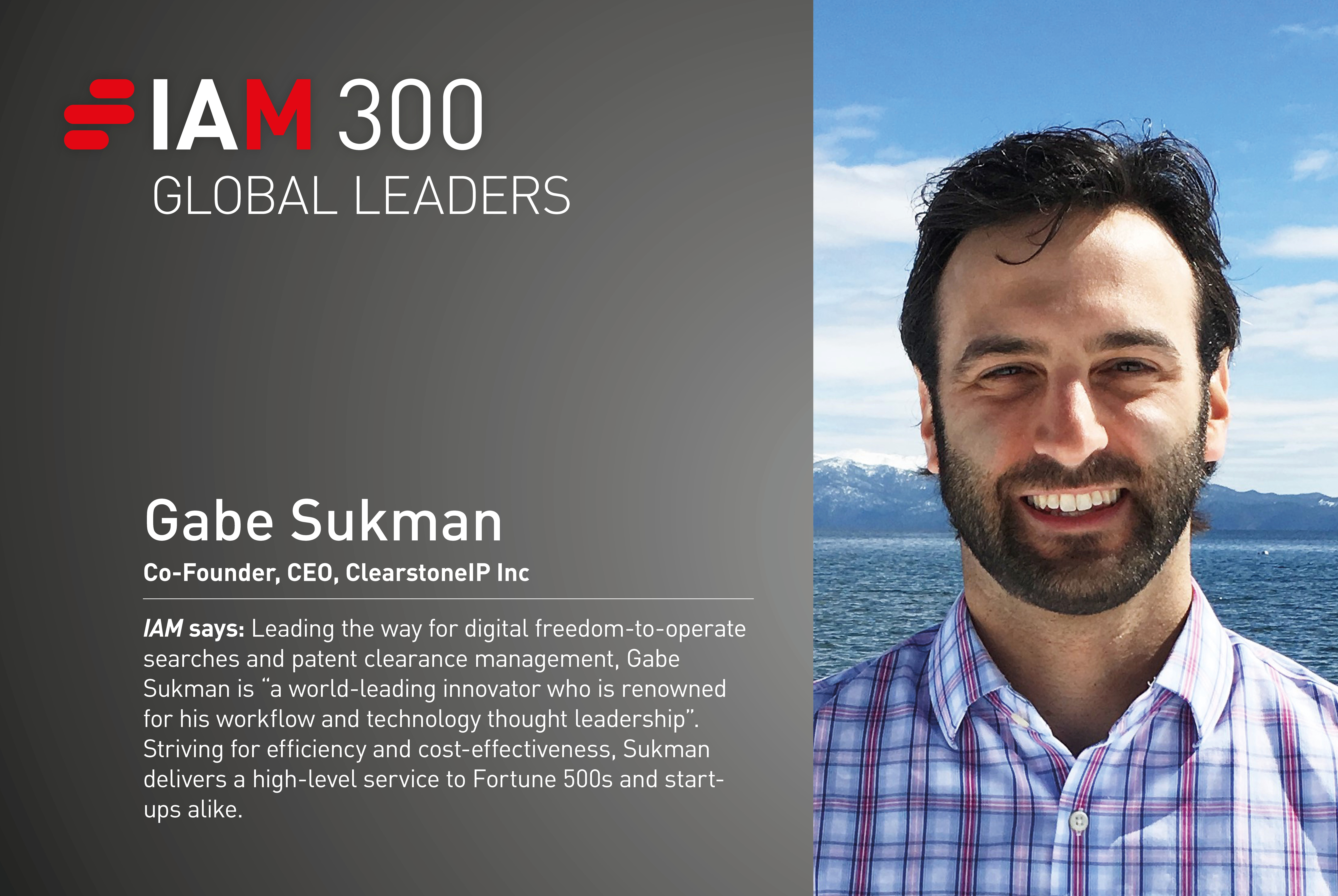Gabe Sukman
What is the biggest challenge you have faced in your professional career and how did you overcome it?
It was certainly in making the transition from patent attorney to software company founder. Understanding the pressing need for a freedom-to-operate (FTO) management solution and being able to bring that into existence in a sustainable way are very different things.
While much can be learned from books and courses, crucial lessons came in my day-to-day customer interactions. It is tempting when starting a business to over ideate and try to build the perfect product before launch. Perfection will not succeed without market participation. While it is critical for founders to have a novel idea and the vision to see it through, the execution details and ultimate path to success are almost never predetermined. I overcame challenges by engaging with hundreds – if not thousands – of patent practitioners and analysts to arrive at a powerful solution for accelerated and empowered FTO management.
As co-founder and CEO of ClearstoneIP, how do you manage your organisation to ensure that clients receive the highest standard of service while all staff fulfil their potential?
Client and customer focus is at the heart of everything we do. Our entire staff is committed to this because it is rewarding and we know that customer perspective is in the product’s DNA.
What issues are concerning your clients at present, and what advice are you giving to them?
In the FTO space, there are two prevalent issues. First is adapting to a rapidly changing patent landscape. The key is to implement a knowledge management system that enables you to effectively leverage historical work and combine it with active monitors to stay apprised of relevant events. We spend considerable effort in devising workflows and processes to help our clients alleviate this concern. Second is effective collaboration between legal, R&D and business departments. FTO is a cross-functional process with business-wide implications, benefits and consequences. To enable effective communication and transparency at every level, I advise clients to adopt as few communication channels as possible and to use tools that minimise the burden for all stakeholders. For example, when engineers can access relevant information quickly and precisely, they buy into FTO instead of seeing it as a burden. This results in accelerated product development timelines and significantly reduced risk.
In your more than 20 years of patent experience, you spent time as a USPTO examiner. What are the most valuable lessons you learned from this experience?
Serving as an examiner was one of the most rewarding and foundational parts of my career; there is no substitute for understanding how the office thinks. That experience has provided a perspective that has helped in every aspect of my professional life.
In my current role, the benefits of these lessons are wide ranging. I am engaged daily at the junction of patent strategy, best practices, data management and opportunities to infuse automation technology into these areas. Without the experience I gained as an examiner, in addition to the areas in which I practised, I would not be able to have the necessary conversations with clients or build our platform.
What are some notable changes you have seen in the AI ecosystem over the last 12 months?
I am astounded at the capabilities of AI tools. Even the basic ChatGPT model has demonstrated impressive results when applied to patent analysis, as I have observed through preliminary testing. AI has turned a critical corner in the legal tech space and absolutely needs to be paid attention to. I agree with those claiming that a sea change is now happening – on the order of the Internet itself – that will revolutionise every aspect of our work and the nature of human-machine interaction.
When using these tools, it will be critical to not fall into the trap of swinging a powerful hammer where there is no nail. It needs a real problem in a real environment to maximise its value, and boundary conditions need to be defined so that reliance is informed and guarded. While our FTO platform has been delivering vast improvements in efficiency, mainly through workflow automation and data management, I am excited about how AI could be a force multiplier in our environment, due to the structured nature of the existing system data and ways that AI could enhance analytical capabilities for our users. We are currently exploring several avenues where AI could provide significant value in the FTO and patent clearance space.
Gabe Sukman
Co-Founder, CEO
[email protected]
Gabe Sukman is a patent attorney and co-founder of ClearstoneIP, where he leverages his more than 20 years of patent experience to drive the digitalisation of freedom-to-operate management through a comprehensive software platform. His background spans a depth of experience, starting out as a USPTO patent examiner before representing clients in prosecution, litigation and portfolio strategy at international law firms. ClearstoneIP’s client base includes Fortune 500 and other large corporations, law firms and start-ups internationally.
